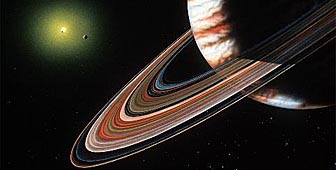
Swiss museum probes beyond the boundaries of science

The European Space Agency has asked a small museum in the Swiss town of Yverdon-les-Bains to study whether the ideas contained in science fiction can be applied to real life.
The ESA’s Innovative Technologies from Science Fiction for Space Applications (ITSF) project is aimed at “reviewing past and present SF literature, artwork and films to identify and assess innovative technologies and concepts which could be developed further for space applications”.
The eventual goal is to “obtain fairly firm ideas viable for long-term development by the European space sector”.
The people behind the programme believe that sci-fi often contains elements of plausibility, as they are often based on existing scientific knowledge.
Indeed several SF authors have anticipated with some accuracy how new technologies might be applied in the future. Planetary landers were first written about in 1928, while orbital space stations with living quarters appeared in print in 1945.
It’s a view shared by Patrick Gyger, director of the Maison d’Ailleurs in Yverdon, which will be conducting the review.
“There are different kinds of Science Fiction. There’s what we call speculative fiction, which is more about social sciences and relationships between people. Then there’s Hard SF, which is more science-oriented,” Gyger told swissinfo. “I really don’t know what we’re going to find. I’m pretty curious.”
The Maison d’Ailleurs – or House of Elsewhere – was set up in 1976 by Pierre Versins, author of a famous encyclopaedia on science fiction, and is dedicated to “Science Fiction, Utopia and Extraordinary Journeys”.
It is the only place in Europe that is both a public museum and a science fiction research centre. It houses over 40,000 books, as well as films, artwork and toys.
The three-phase survey will last until the end of the year, and will involve a team of science fiction experts. But the Maison d’Ailleurs is also interested in contributions from the general public or science fiction fans. So what is the ESA going to do with the findings?
“I don’t really know. Our work stops at a certain level. It’s going to be reviewed by experts at some point. We hope we can find five to ten technologies to be studied further. Even if there’s only one really good idea, this will be passed on to their engineers,” Gyger says.
by Roy Probert

In compliance with the JTI standards
More: SWI swissinfo.ch certified by the Journalism Trust Initiative





























You can find an overview of ongoing debates with our journalists here . Please join us!
If you want to start a conversation about a topic raised in this article or want to report factual errors, email us at english@swissinfo.ch.